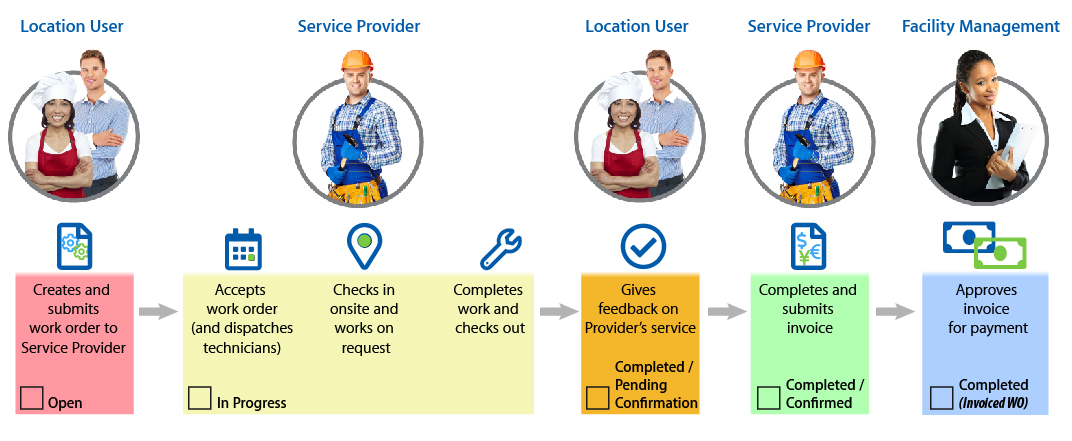About Work Orders in Dashboard 2.0
- Uma Srinivasan (Unlicensed)
- Caroline Antoun
- Jing Tong (Unlicensed)
A work order is a ticket that is dispatched to a service provider to perform repair or planned maintenance services. Generally, the work order details what the issue is, where the issue is, and when to go to a location, as well as the maximum cost allowed. In Service Automation Dashboard 2.0 you may view, track, and manage work orders. Once a work order is generated, it is permanently retained for tracking, invoicing, reporting, and auditing purposes.
There are generally two types of work orders:
- Planned Maintenance Services: Typical maintenance services that occur on a regular basis, such as janitorial or cleaning services. These services are generated through the Planned (Preventative) Maintenance module in Service Automation.
- Requested Repairs: Repair services that happen occasionally, such as broken or malfunctioning equipment or infrastructure. These services are usually generated through Service Automation Dashboard 2.0.
The Life Cycle of a Work Order
The below illustration depicts a typical work order life cycle. You may notice some variation in the life cycle depending on your configuration.

The Four Parts to Requesting Service
In Dashboard 2.0, the New Service Request page allows you to create and submit work orders for service providers within your Service Automation network. This is the beginning of the life cycle of a work order. Work orders are permanently retained for tracking, invoicing, reporting, and auditing purposes.
Your dashboard permissions and system configuration determine what you may see in each section as set by your ServiceChannel administrator.
Requesting service occurs in four parts:
- Choose the problem that is occurring on which piece of equipment or asset, and where at your location the problem is happening. Selecting the appropriate information here dictates which service provider arrives at your location, and when they arrive.
- Troubleshoot the problem by providing more details about the problem and/or follow the troubleshooting questions for on-site correction. Depending on the problem area selected, it may be required to either describe the problem or answer additional troubleshooting questions called Guided or Interactive Troubleshooting Questions. In other instances, you may simply see a Message that details alternative actions to take.
- Review and submit the service request for accuracy. View details such as the service provider who will be performing the service, the estimated date and time of service, the monetary amount that the service should not exceed, and add attachments to the work order (such as photographs of the problem).
- Work Order Confirmation provides verification that the work order was submitted, and includes tracking and contact information.
-
Page:
-
Page:
-
Page:
-
Page:
-
Page:
-
Page:
-
Page:
-
Page:
